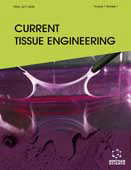Abstract
Parkinson's disease (PD), a prevalent geriatric neurodegenerative disorder, is characterized by selective dopaminergic neuronal death in the substantia nigra, leading to motor and non-motor symptoms. Current therapeutic options are limited to symptomatic relief that do not reverse the underlying pathology. Dopaminergic neural replacement through grafting of fetal mesencephalic tissue, while promising in theory, has had many barriers to routine clinical use. Such tissue survives and integrates poorly into recipients and has shown little benefit in sham-controlled surgical studies. Graftinduced dyskinesias often result from immune rejection and bias for serotonergic neuronal differentiation. Pluripotent embryonic stem cells (ES cells) are also theoretically promising but may form aberrant non-neural tissue and suffer graft rejection. Neural stem cell (NSCs) are a subset of adult stem cells that are limited to neural tissue differentiation and may be more easily expanded, integrated and regulated than fetal mesencephalic transplants or ES cells. Graft rejection and ethical issues would complicate use of allogeneic fetal NSCs, however. It would also be unsafe to obtain NSCs directly from patients given that they are present only within intricate brain regions and from adults have poor capacity for proliferation. Thus, the future of neuroregenerative therapy for PD may lie in generation of NSCs from patient-derived induced pluripotent stem cells (somatic cells artificially endowed with pluripotency) or endogenously increased by mitogenic drugs. Overall, therapy for Parkinson’s disease should be long-term and safe while producing expandable, integrated, and phenotypically balanced regeneration.
Keywords: Induced pluripotent stem cells, mesenchymal stem cells, MS-818, neural stem cells, neurodegeneration, Parkinson’s disease, regenerative therapy, stem cell therapy.
 31
31

